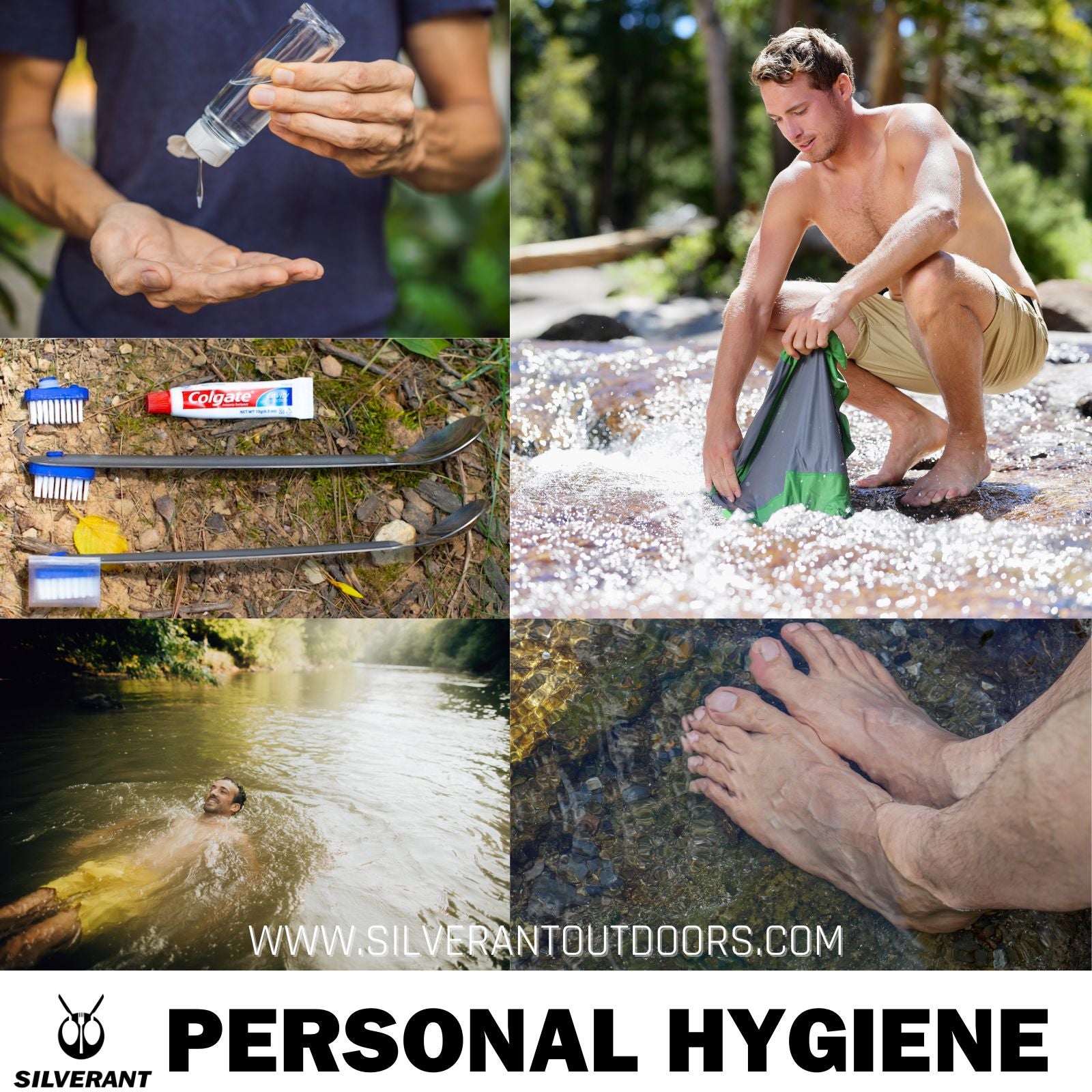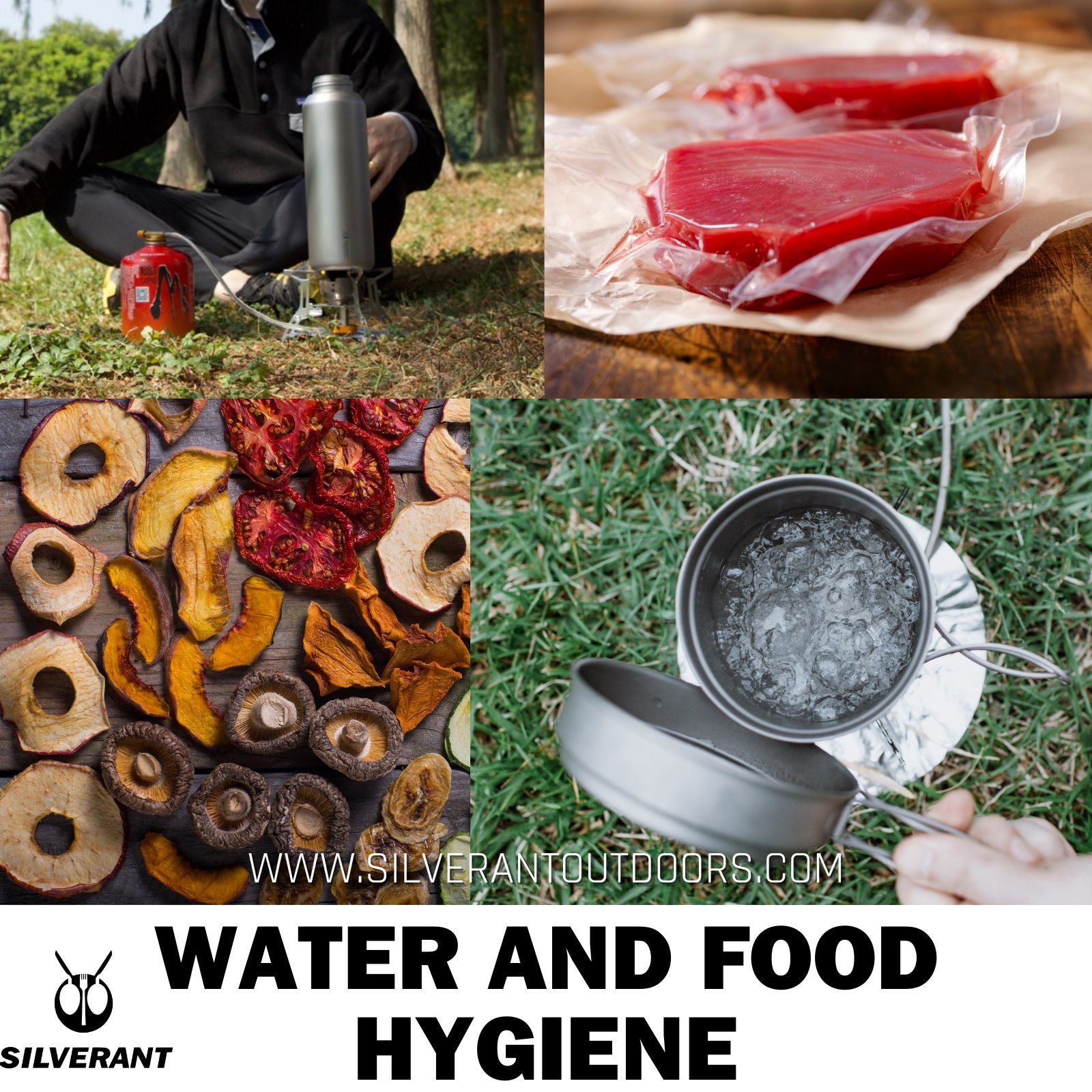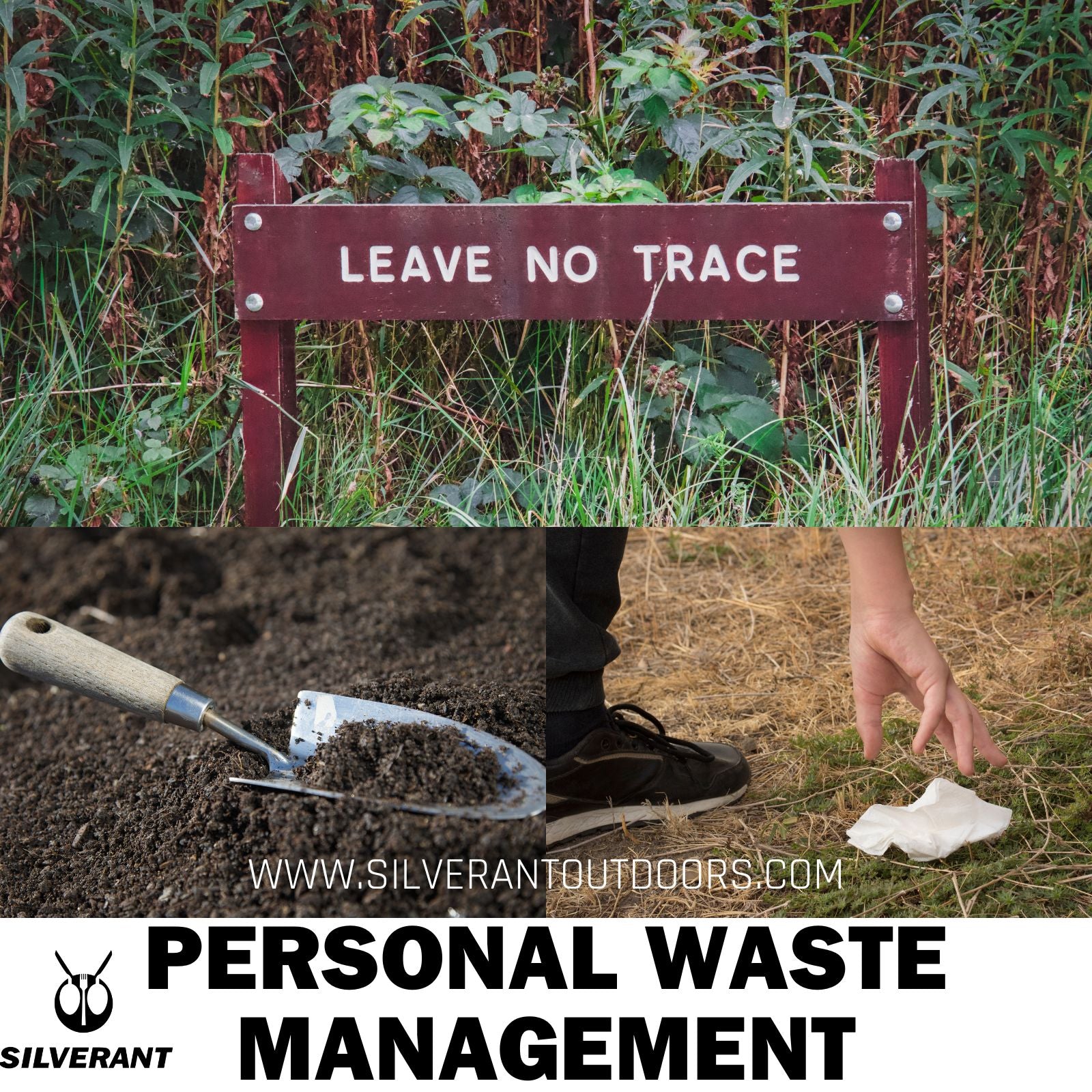Save 25% OFF

Ray Mears hit the nail on the head when he said that nature is the real classroom for bushcraft.
Out there, every leaf, every breeze, teaches you something if you're willing to learn.
But, let's face it, going out into the wild can be a wild ride. It's all about diving into nature's beauty while sharpening your survival skills.
Yet, spending too much time in the bush brings its own set of challenges, like keeping clean and staying healthy.
Ignoring these basics can make your adventure turn sour fast during long bushcraft trips.
So, in this guide, we're gonna lay down ten must-know things. From keeping yourself clean to managing your waste, we've got you covered.
By following these tips and incorporating them into your outdoor adventures, you can ensure a safe and enjoyable experience while minimizing the risk of illness and discomfort.
Personal Hygiene
Let's start by talking about personal hygiene, because it's the foundation for all things hygiene-related.
Washing Hands and Using Sanitizer
When it comes to personal hygiene, your hands take the top spot.
You use them for everything from brushing your teeth to cooking and eating, even first aid, so it's super important to keep them clean.
Why? Well, think about it—dirty hands means germs, and those germs can easily end up in your mouth or eyes.
Bushcrafter often point fingers at contaminated water for getting sick on the trail, but hand-to-mouth infection is just as likely.
It's a smart move to bring along some high-concentration soap, but make sure it's biodegradable to be kind to the environment.
However, soap and water aren't always on standby when you need them.
That's why I opt for alcohol-based hand sanitizer. It's easy to pack and super handy for fighting off germs.
Just squeeze a bit onto your palm, rub your hands together real good, and give it about 20 to 30 seconds for the alcohol to work its magic.
It's just like how doctors clean their hands before seeing a new patient.
So, bushcrafters should do the same after using the bathroom and before cooking or digging into meals, you know, all that good stuff.
Oh, and here's a bonus tip: Hand sanitizer isn't just for your hands. You can use it to clean your eating utensils too. Pretty handy, huh?
Taking Care of Teeth
Taking care of your teeth is another crucial part of staying hygienic out in the wild.
Don't slack on dental care just because you're out bushcrafting.
Regular brushing keeps dental issues at bay and leaves your breath smelling fresh.
Make sure to pack a travel-sized toothbrush and toothpaste so you can clean your teeth after chowing down.
Oh, and when picking toothpaste, go for the organic or natural ones to be eco-friendly, just like with soap.
Also, we found a cool gadget that turns a long-handled spoon or spork into a toothbrush super easily.
It takes up less space than a regular toothbrush but works just as well.
I totally fell for this thing after trying it once, and now it's a must-have for all my adventures.
Plus, brushing helps to clear out those annoying food bits stuck between your teeth, which is super important, especially if you've got big gaps like me.
It's a real game-changer for keeping your oral hygiene in check when you're out in the wild.
Keeping the Body Clean
The third part is all about keeping body clean. Even if you're dead tired after a long hike and all you wanna do is crash into bed after eating, you still gotta squeeze in a shower.
Bcause let's face it, sweat brings in a whole bunch of bacteria.
Now, if you're bushcrafting on hot days and you've got lakes or rivers nearby, take a dip.
It's a perfect way to wash off the day's dirt and grime and give yourself a mental and physical boost.
Just remember to swim away from spots where other folks get water, camp, or fish.
And skip the soap, even the eco-friendly kind can mess with water critters.
But if it's cold out and there's no water around, go for the baby wipe method.
After stripping off your day's clothes, give yourself a wipe down with them.
Use one side for your face and neck, then flip it over for your armpits and groin area.
It's easy peasy, and you won't have to worry about stripping down outside your tent.
Just remember, baby wipes aren't biodegradable, so pack them out with you.
And always go for the unscented ones, because artificial scents can attract bugs and critters, even bears.
Caring for Feet
And don't forget about your feet when you're cleaning up.
You're out on the trail, pounding away with each step. All that walking and sweating can lead to some serious chafing.
So, it's important to give your feet a good wash and scrub to get rid of all that sweat and dirt.
If you can't find a natural water source, my go-to move is using baby wipes to clean them up first, then hitting them with some sanitizer to keep things hygienic.
After that, I like to let them air dry while I chill in my bushcraft chair by the campfire. Not a big fan of foot powder myself.
Now, being a Hongkong native, I'm all about foot massages. They work wonders for soothing sore feet and relaxing your mind after a long journey.
Honestly, I make time for it every day, even on workdays back home.
And don't forget about choosing the right socks and shoes to avoid sweaty feet and blisters.
Moisture-wicking socks are the way to go—they keep your feet cool and dry.
And always pack a few extra pairs for long trips. They're handy to switch out and ensure you always have dry socks to slip into after washing up.
For example, on a 7-day camping trip, I bring four pairs of socks. I wear one pair until they get wet, then switch to the next. I always keep a dry pair for nighttime to keep my feet warm.
As for footwear, go for breathable shoes that fit perfectly.
Here's a little tip: Take your shoes off during breaks and let your feet get some air.
It's a game-changer for relieving discomfort and preventing bacteria buildup.
Clothing Care
Last but not least, taking care of your clothes is just as important as keeping your socks clean on a multi-day backcountry trip.
With limited clothing you carry, things are bound to get dirty, so a laundry day is a must.
One of the best ways to stay fresh is to plan a rest day during your journey, preferably when it's sunny and breezy.
This is your chance while setting up camp in the same spot, take your time to bathe thoroughly, and give your clothes a good wash and dry.
Just dip your clothes in a stream or lake a few times, rubbing them to rinse away all the dirt, and then squeeze them to get rid of the water.
But here's the catch—don't use any soap while washing, not even the eco-friendly kind, especially if the water body is small and still. Soap can harm aquatic life.
And be careful with those fancy athletic clothes with anti-microbial silver nanoparticles. They're not so great for the environment, so use them wisely.
When it comes to drying your clothes, paracord is your friend. Hang it between two trees and let your clothes air dry.
No trees around? No problem. Lay them out on a sunny rock.
And here's a neat trick: sunshine works wonders for killing bacteria. This method has been used for centuries in Asia.
But on chilly days, drying clothes outdoors isn't ideal. With shorter daylight hours and weaker sunlight, it can take ages.
Instead, you can clean your base layer using alcohol. It's how Chinese emperors kept their dragon robes spotless.
Just spray some alcohol on your clothes, and it'll get rid of sweat and bacteria.
Lastly, consider investing in quick-dry underwear. They make it easy to wash and dry your most important clothing piece in a jiffy.
When your hands, teeth, body, feet, and clothes are all clean, you're good to go in terms of personal hygiene.

Water and Food Hygiene
As mentioned before, getting sick from hand-to-mouth infections is a biggie for bushcrafters out on their adventures.
Once your hands are clean, it's important to make sure the water and food you handle with those hands are clean too.
Purifying Water
Water is the top essential for staying alive, no doubt about it.
But out in the wild, water sources can be full of nasty stuff like bacteria and parasites.
So, purifying that water before you drink it or use it for cooking is absolutely crucial.
My go-to method? I bring the water to a rolling boil for at least one minute in my trusty titanium water bottle. Then, I toss in some tablets to make sure it's safe to drink.
If you need more info on this, check out my blog piece: "4 Ways to Purify Water While Backpacking."
Proper Food Storage
When prepping food for your long bushcraft adventures, dehydrated options are always a safe bet, especially when it's hot out.
But if you're like me and crave something fresh on your journey, make sure to pack your goodies in airtight resealable bags before you head out.
Once you open a bag, finish all the food inside and avoid saving it for later.
But if you're feeling adventurous, learning how to set up traps or identify edible plants can be a game-changer.
On colder days, nature acts like a giant freezer, which makes keeping your food fresh a breeze.
And remember, always wash your hands before and after handling food, no matter what the temperature is outside.
But if you're bushcrafting in North America, make sure to hang your food bags up high away from those curious bears.
Keeping Water and Food Gear Clean
Moreover, don't forget to keep your water and food gear clean.
Rinsing them off is a good start, but it's not enough.
You gotta give them a proper clean by boiling a pot of water and dunking your bottle, bowls, and cutlery in there for a good soak.
I usually do this once a day after dinner, no matter if it's hot or cold out.
After they're clean, hang them out to dry on a paracord line or on some rocks.
While they're drying, grab a trowel and head into the woods (make sure it's at least 200 feet(60.96 meters) away from your shelter and any water source) to dig a hole for dumping out your dirty water.
This step is crucial because the water can start to smell like food and attract animals.
Carefully pour the dishwater into the hole using a pot lid to prevent any food chunks from falling in. Those food scraps go in your garbage bag.
Finally, fill the hole with dirt. Now you've buried your dishwater, reducing the chances of animals smelling it and coming around looking for a snack.
To sum it up, the key to staying hygienic with food and water on long bushcraft trips is purifying water, storing food properly, and regularly sanitizing your food and water gear.

Personal Waste Management
Lastly, let's talk about personal waste management. It might not be the most enjoyable topic, but it's super important for both your health and the environment.
Proper Disposal of Human Waste
Firstly, proper disposal of human waste is crucial.
Just like you dump out your dirty gear washing water, always bury human waste at least 200 feet(90.69 meters) away from any water sources and your shelter.
Make sure to dig a hole at least 6-8 inches(15.24-20.32 cm) deep to prevent contamination and the spread of diseases.
Also, using biodegradable toilet paper or wipes is a must. This ensures that your waste breaks down naturally over time.
Following Leave No Trace Guidelines
Additionally, always stick to Leave No Trace guidelines and bring back all waste, including toilet paper and hygiene products.
This way, we can keep the wilderness pristine for future generations, making sure our presence doesn't harm the delicate ecosystems or spoil the natural beauty that brings us outside.
If you're not sure about Leave No Trace guidelines, be sure to check out this blog piece: "Leave No Trace - A Complete Guide."
Protecting Mother Nature is the responsibility of every outdoor enthusiast.

Conclusion
In short, keeping yourself clean and fresh is key for enjoying safe and rewarding outdoor adventures, especially during those long bushcraft journeys.
So, remember to wash your hands regularly and keep that oral hygiene in check. And don't forget about your body and feet—keeping them clean is just as important. Taking care of your clothing is a must to stay comfortable and hygienic throughout your trip.
When it comes to water and food, make sure to purify your water and store your food safely. And don't overlook sanitizing your food and water gear to steer clear of any hand-to-mouth infections.
Proper waste disposal is crucial too and always following the Leave No Trace guidelines to keep both yourself and Mother Nature clean and undisturbed.
By following these tips, you can minimize the risk of illness and discomfort while immersing yourself in the beauty of nature.
So, what are your tricks for staying clean and fresh during those long bushcraft trips? Drop us a comment or shoot us a message—we're all ears and ready to chat!
To your next adventure
Steve












































